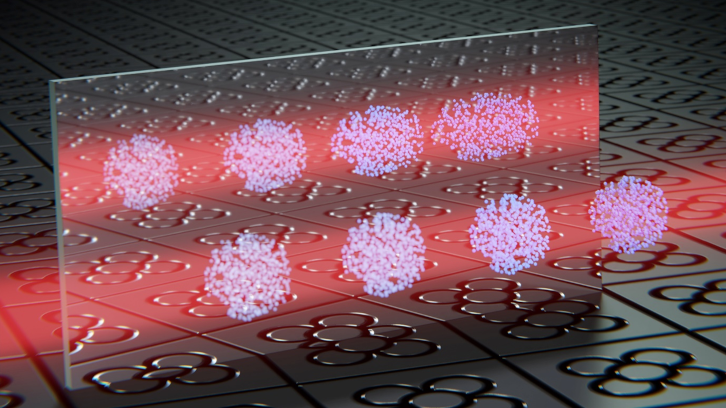Simulating a condensed-matter topological gauge theory with ultracold atoms

A collaboration between researchers from the UAB Department of Physics and the ICFO has resulted in a significant advance towards the quantum simulation of the Chern-Simons gauge theory, which explains the fractional Hall effect, one of the most intriguing phenomena of condensed matter. For the first time ever, researchers performed in an experiment its reduction to a single spatial dimension, the chiral BF topological gauge theory, using potassium-39 atoms cooled a few billionths of a degree above absolute zero.
The physics of a two-dimensional gas of electrons subjected to a perpendicular magnetic field gives rise to one of the most intriguing phenomena of condensed matter: the fractional quantum Hall effect. For specific filling factors (the ratio of electrons to magnetic flux quanta), the electrons form a strongly correlated collective state of matter. Surprisingly, their excitations behave as if they have elementary charge and fractional exchange statistics, i.e., as anyons. Such complex behavior can be elegantly described by an effective low-energy theory, the topological Chern-Simons gauge theory. The direct experimental realization of such a theory in an artificial and highly tunable quantum system - known as quantum simulation - would allow the observation of anyons in the absence of strong interactions, enabling the controlled exploitation of their properties for applications such as quantum computing.
In a recent collaboration between the Universitat Autònoma de Barcelona (UAB) and the Institute of Photonic Sciences of Barcelona (ICFO) recently published in Nature, we present a significant advance towards the quantum simulation of the Chern-Simons gauge theory by performing for the first time in an experiment its reduction to a single spatial dimension, the chiral BF topological gauge theory. Furthermore, the journal Physical Review Research has published the theoretical work associated with the Nature article as an Editor's suggestion.
The experiment uses potassium-39 atoms cooled a few billionths of a degree above absolute zero. Potassium 39 has two spin states with atomic interactions of very different strengths. When coupled by light, the atomic interactions get bound to the momentum of the atoms, effectively becoming chiral: the atoms interact differently with each other depending on their velocity. At UAB, we showed theoretically that under certain conditions such interactions are equivalent to chiral BF gauge theory, and can be realized in a range of experimentally accessible parameters.
To demonstrate the chirality of the interactions, in the ICFO experiment we created chiral bright solitons: wave packets that propagate without dispersion when traveling in one direction, but expand like a normal gas when propagating in the opposite direction. Such a collective state, predicted theoretically in the early 1990s from gauge theory, reproduces the behavior of electrons at the edges of fractional quantum Hall effect materials and had not been observed experimentally until now. We also observed a synthetic electric force self-generated by the system, which acts on the atoms despite being neutral and constitutes one of the key properties of the chiral BF theory.
These results constitute an important step towards the quantum simulation of effective gauge theories using ultracold atoms.
Alessio Celi
Talent Researcher
Department of Physics
Universitat Autònoma de Barcelona
alessio.celi@uab.cat
Leticia Tarruell
ICREA Research Professor
Institut de Ciències Fotòniques
leticia.tarruell@icfo.eu
References
A. Frölian, C. S. Chisholm, E. Neri, C. R. Cabrera, R. Ramos, A. Celi, and L. Tarruell, Realizing a 1D topological gauge theory in an optically dressed BEC, Nature 608, 293-297 (2022) DOI: 10.1038/s41586-022-04943-3. https://www.nature.com/articles/s41586-022-04943-3
C. S. Chisholm, A. Frölian, E. Neri, R. Ramos, L. Tarruell, and A. Celi, Encoding a one-dimensional topological gauge theory in a Raman-coupled Bose-Einstein condensate, Phys. Rev. Research 4, 043088 (2022) DOI: 10.1103/PhysRevResearch.4.043088
https://journals.aps.org/prresearch/pdf/10.1103/PhysRevResearch.4.043088

